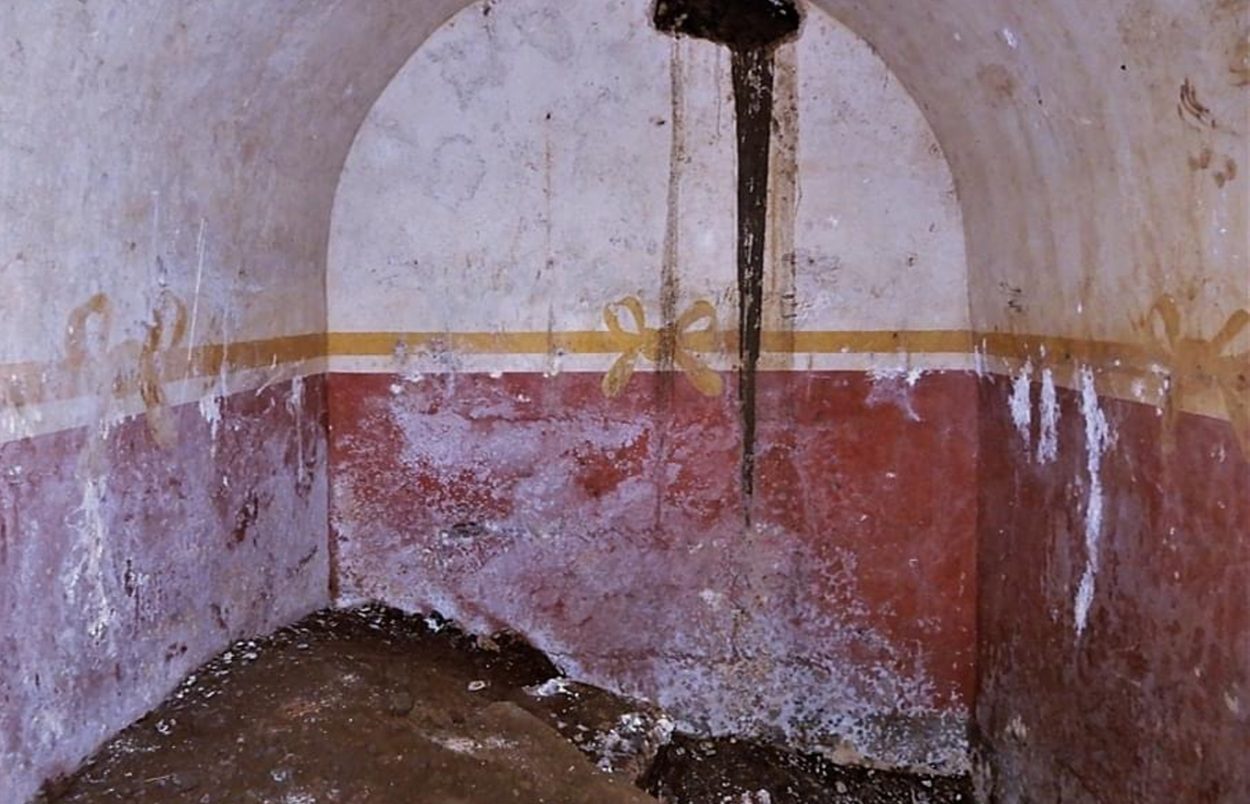A high status Macedonian tomb has been uncovered in the ancient city of Aegae (present-day Vergina), located in Imathia, Central Macedonia.
During antiquity, Aegae was the original Macedonian capital, which remained the burial place for royalty after the capital was transferred to the city of Pella at the beginning of the 4th century BC.
It was also at Aegae where Philip II of Macedon was murdered by Pausanias of Orestis, one of his seven bodyguards who stabbed Philip in his ribs.
At the 36th Annual Archaeological Meeting for “the Archaeological Project in Macedonia and Thrace in 2023”, the Honorary Superintendent of Antiquities, Angeliki Kottaridis, announced the discovery of a high status Macedonian tomb in the necropolis of Aegae.
The tomb was found during construction works for a new sewage network, revealing an entranceway enclosed by piles of stones. The interior of the tomb measures 3.7 x 2.7 metres and is decorated with an encircling golden band with bows.
According to the researchers, the tomb dates from the 3rd century BC, after the reign of Alexander the Great, and is located near to a similar tomb first excavated in 1969.
Within the tomb is the burial of a man, whose remains were placed alongside a shield with reinforced iron parts and several weapons. The remains of a woman (likely the wife) was also buried in the tomb, accompanied by items of jewellery such as beads and necklaces, and a golden myrtle wreath.
Ms Kottaridis explained that this part of the necropolis was reserved for high status Macedonians, evidenced by several previous tomb discoveries that contained rich funerary objects.
Header Image Credit : Honorary Superintendent of Antiquities
Sources : Honorary Superintendent of Antiquities





